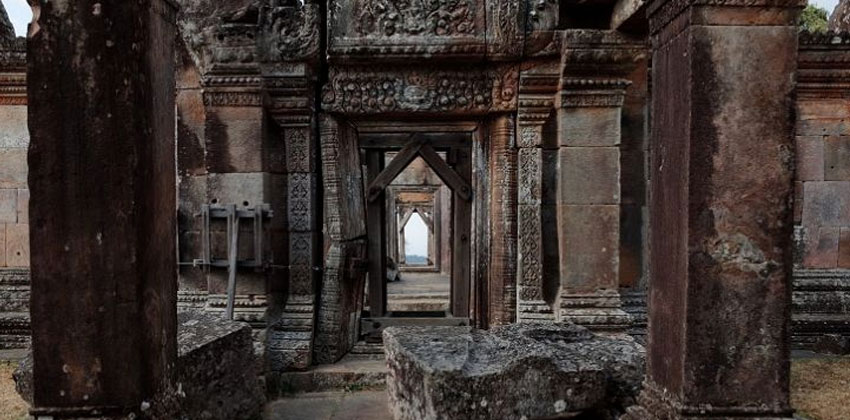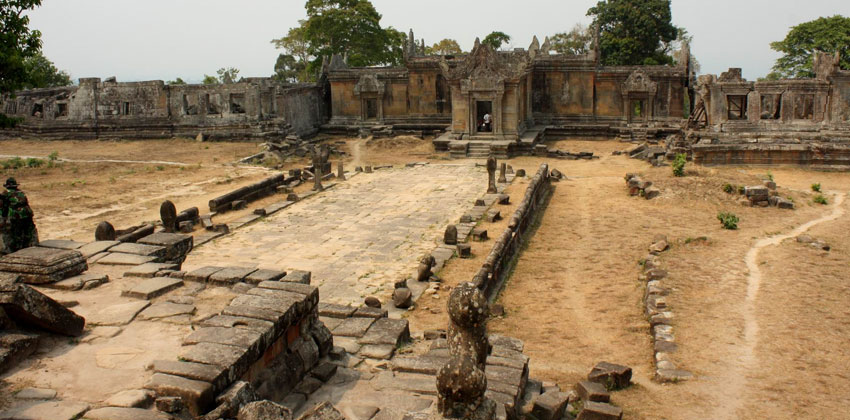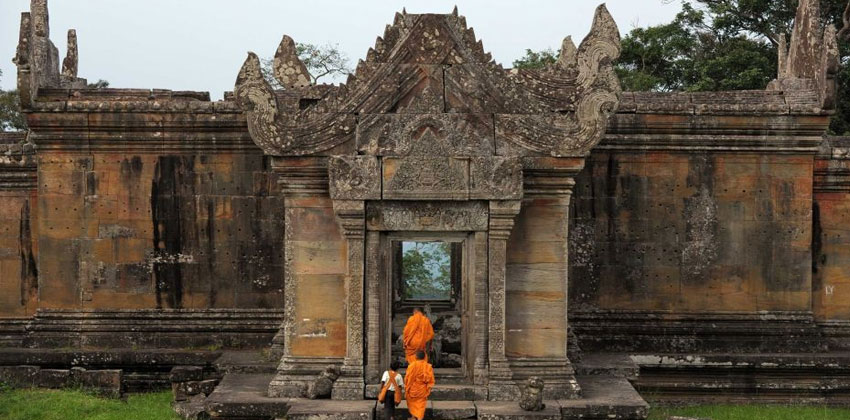Preah Vihear temple, UNESCO accredited heritage site in Cambodia

Preah Vihear Temple
Preah Vihear temple is located in Svay Chhrum village, Kantuot commune, Choam Ksan district, about 108 kilo meters north of Preah Vihear provincial town. Preah Vihear province was created in 1964 by cutting the land from Stung Treng, Kampong Thom and Siem Reap provinces.

The province is at the north of Cambodia, on the plateau that is rich in forests, mountains and streams. Preah Vihear temple is an ancient Hindu temple built during the reign of the Khmer Empire that is situated atop a 525 meter cliff in the Dangrek Mountains. In 1962, following a lengthy dispute between Thailand and Cambodia over ownership, the International Court of Justice (ICJ) in The Hague ruled that the temple is in Cambodia.
Preah Vihear temple has the most spectacular setting of all the temples built during 6 centuries-long Khmer Empire. As a key edifice of the empire’s spiritual life, it was supported and modified by successive kings and so bears elements of several architectural styles.

Preah Vihear is rare among Khmer temples in being constructed along a long north-south axis, rather than having the conventional rectangular plan with orientation toward the east. The temple gives its name to Cambodia’s Preah Vihear province, in which it is now located, as well as the Khao Phra Wihan National Park which borders it in Thailand’s Sisaket province and through which the temple is most easily accessible. On July 7, 2008, Preah Vihear was listed as a UNESCO World Heritage Site.
Construction of the first temple on the site began in the early 9th century; both then and in the following centuries it was dedicated to the Hindu god Shiva in his manifestations as the mountain gods Sikharesvara and Bhadresvara

An inscription found at the temple provides a detailed account of the then reigned King Suryavarman II studying sacred rituals, celebrating religious festivals and making gifts, including white parasols, golden bowls and elephants, to his spiritual advisor, the aged Brahmin Divakarapandita. The Brahmin himself took an interest in the temple, according to the inscription, donating to it a golden statue of a dancing Shiva known as “Nataraja”. In the wake of the decline of Hinduism in the region the site was converted to use by Buddhists.



